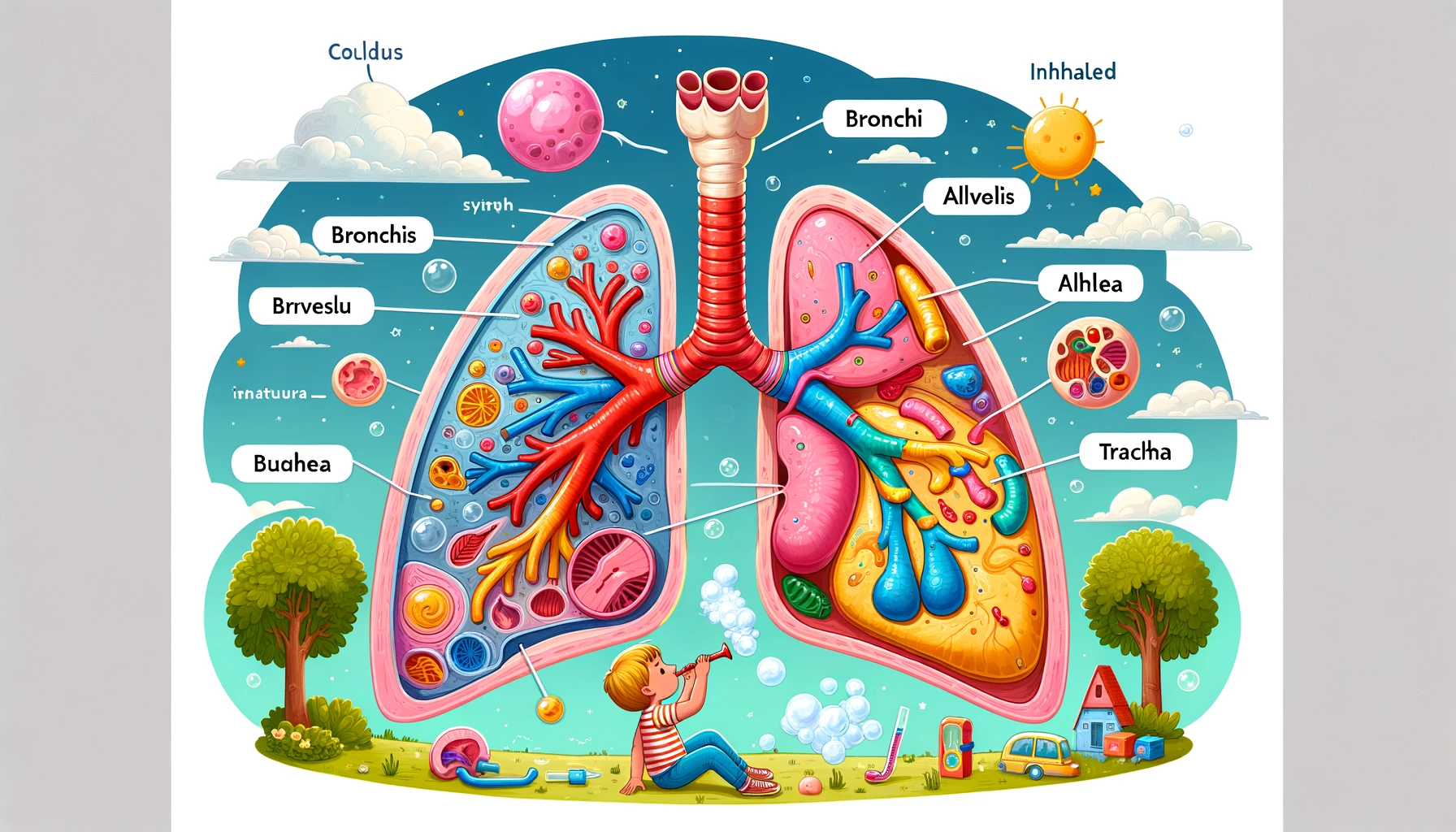How the Lungs work: Functions and Importance
How the Lungs work: Functions and Importance
Table of Contents
- Introduction to the Lungs
- Anatomy of the Lungs
- The Process of Breathing
- Gas Exchange in the Alveoli
- Regulation of Breathing
- Common Lung Disorders
- Importance of Lung Health
- Conclusion
- References
How the Lungs Work: Functions and Importance
Introduction to the Lungs The lungs are vital organs in the respiratory system responsible for exchanging oxygen and carbon dioxide between the air we breathe and the bloodstream. This article explores how the lungs work, highlighting their anatomy, functions, and importance in maintaining overall health.
Anatomy of the Lungs The lungs are a pair of spongy, air-filled organs located on either side of the chest (thorax). Key anatomical features include:
- Bronchi: The trachea (windpipe) divides into two main bronchi, one for each lung, which further subdivide into smaller bronchi and bronchioles.
- Alveoli: Tiny air sacs at the end of the bronchioles where gas exchange occurs. Each lung contains about 300 million alveoli.
- Pleura: A double-layered membrane that surrounds each lung and lines the chest cavity, providing lubrication and reducing friction during breathing.
- Diaphragm: A dome-shaped muscle at the base of the lungs that plays a crucial role in breathing.
The Process of Breathing Breathing, or respiration, involves two main processes: inhalation and exhalation.
- Inhalation: During inhalation, the diaphragm contracts and moves downward, while the intercostal muscles between the ribs contract and lift the rib cage. This expansion of the chest cavity decreases the pressure inside the lungs, allowing air to flow in.
- Exhalation: During exhalation, the diaphragm relaxes and moves upward, and the intercostal muscles relax, causing the chest cavity to decrease in volume. This increases the pressure inside the lungs, forcing air out.
Gas Exchange in the Alveoli Gas exchange is the primary function of the lungs and occurs in the alveoli:
- Oxygen Transport: When air enters the alveoli, oxygen diffuses across the thin walls of the alveoli and into the surrounding capillaries, where it binds to hemoglobin in red blood cells. This oxygen-rich blood is then transported to the rest of the body.
- Carbon Dioxide Removal: Carbon dioxide, a waste product of cellular metabolism, diffuses from the blood into the alveoli and is expelled from the body during exhalation.
Regulation of Breathing Breathing is regulated by the respiratory centers in the brainstem, primarily the medulla oblongata and the pons:
- Medulla Oblongata: The medulla controls the rhythmic pattern of breathing by sending signals to the diaphragm and intercostal muscles to contract and relax.
- Pons: The pons fine-tunes the breathing process, smoothing out the transitions between inhalation and exhalation.
- Chemoreceptors: These sensors in the brainstem and major blood vessels detect changes in blood pH, carbon dioxide, and oxygen levels, adjusting the rate and depth of breathing accordingly.
Common Lung Disorders Several disorders can affect the lungs, leading to various symptoms and health issues:
- Asthma: A chronic condition characterized by inflammation and narrowing of the airways, causing wheezing, shortness of breath, and coughing.
- Chronic Obstructive Pulmonary Disease (COPD): A group of lung diseases, including emphysema and chronic bronchitis, that cause airflow obstruction and breathing difficulties.
- Pneumonia: An infection that inflames the air sacs in one or both lungs, which may fill with fluid or pus, causing cough, fever, and difficulty breathing.
- Lung Cancer: Malignant tumors in the lungs, often associated with smoking, that can interfere with lung function and spread to other parts of the body.
- Pulmonary Fibrosis: A condition characterized by the formation of scar tissue in the lungs, leading to stiffness and reduced lung function.
Importance of Lung Health Maintaining lung health is essential for overall well-being:
- Avoiding Smoking: Smoking is the leading cause of lung disease. Quitting smoking and avoiding secondhand smoke can significantly reduce the risk of lung disorders.
- Healthy Diet: A balanced diet rich in fruits, vegetables, and whole grains supports overall health and can help maintain lung function.
- Regular Exercise: Physical activity strengthens the respiratory muscles and improves lung capacity and efficiency.
- Preventing Infections: Good hygiene practices, vaccinations, and avoiding exposure to pollutants and irritants can help prevent respiratory infections and other lung problems.
- Regular Check-ups: Routine medical check-ups and lung function tests can help detect lung issues early and prevent complications.
Conclusion Understanding how the lungs work is crucial for maintaining respiratory health and overall well-being. The lungs’ functions in breathing and gas exchange are vital for providing oxygen to the body and removing carbon dioxide. By adopting healthy lifestyle habits and being mindful of potential lung stressors, individuals can support their lungs’ function and prevent common lung disorders.

<ⓒ WizardMedics (wizardmedics.com)>


